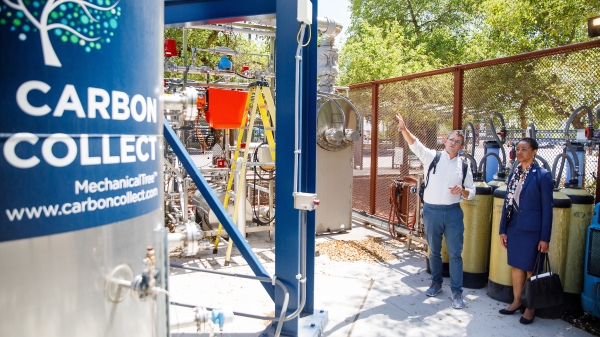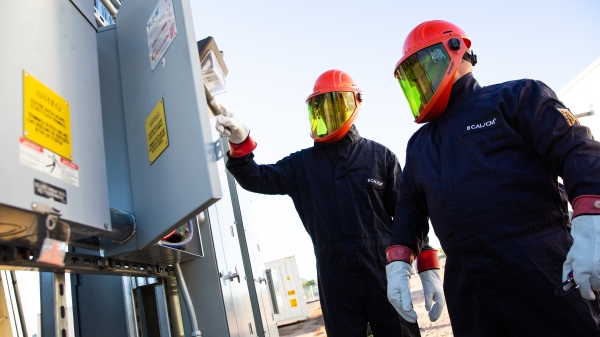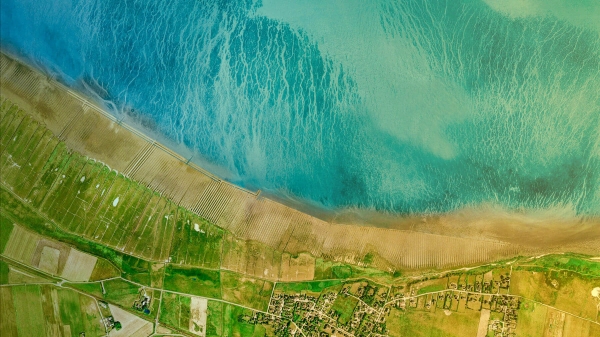The Tokyo Olympics, starting July 23, will be remembered for three things: a complete lack of spectators, being postponed a year because of a pandemic and searing heat.
Jennifer Vanos, an Arizona State University biometeorologist in the School of Sustainability, has been studying the latter for more than two years, publishing a suite of papers on subjects including planning for spectator thermal comfort, a climatological analysis and the need to integrate heat management among athletes, climatologists, events operators, public health officials and emergency medical technicians.
To get an idea of what athletes and officials could expect, Vanos and her team studied the big picture.
“We focused on looking at what was happening in terms of the large-scale atmospheric, ocean interactions that do impact Tokyo a lot to understand, based on what we know climatologically about Tokyo and based on what's happening on a large scale from a climatology perspective, could it be warmer or cooler on average?” Vanos said. “And we use the El Niño southern oscillation as one of the main drivers of understanding that.”
The other part of that paper honed in on urban differences. Scientific papers will often come out and say, "Here’s Tokyo’s climate based on airport data."
“That's great, but that doesn't give us a sense for where all these venues are and what the temperature at each venue could be at different times of the day,” Vanos said.
Anyone living here in the Valley is familiar with hearing what the temperature is at Sky Harbor, but also knowing that’s going to be far different from Arcadia or Apache Junction.
“Those average temperatures will differ depending on where in the city you are, and the humidity can differ to get them to be higher on the coast than if you're inland a little bit or in the city where there's a little bit less sources of moisture from the ocean,” Vanos said.
The challenge to athletes will be that as humidity rises, the efficiency of sweating drops. When it’s humid and hot, sweat drips instead of evaporating. That rarely happens in a place as arid as Phoenix.
“But in a place like Tokyo, it's pretty tough to escape that humidity, unless you go into a really well air conditioned building,” Vanos said. In 2018 she went to Tokyo and met with researchers. She said walking off the plane was like walking into a wet wall.
“I had never experienced that before,” she said. “And I grew up in a pretty humid place in the summer.”
Vanos and her team also linked exposures to the actual time when athletes will be competing. For example, the women's soccer final has been put in the middle of the day.
“Soccer is one of the sports that requires the most intensity with the least breaks,” she said. “And you're not getting much shading. Those players don't get many breaks. There's already a lot of forethought going into how to prepare for that, how to be acclimatized and how to make sure your athletes can perform in this heat.”
Media coverage of the heat frequently gets it wrong, she said. As the temperature goes up, the relative humidity goes down. The maximum humidity of the day and the maximum temperature of the day will never be at the same time. Maximum yield — the coolest part of both temperature and humidity — will occur at about 3 or 4 a.m. Maximum temperature will occur around 2 to 4 p.m.
“That's one thing that you hear sometimes from the announcers on the sports channels,” Vanos said. “That's one of the biggest things that is incorrectly stated, just because it's hard to understand.”
All marathon and race events have been moved to Sapporo in far northern Japan, 500 miles north of Tokyo. Heat at signature sporting events is becoming more and more of an issue, and more study will be required. In Doha, Qatar, at the World Athletic Championships in 2019, the women’s marathon was held at midnight. Almost half the field failed to finish the course because of the heat.
“And that's just not something you want to see at the Olympics, right?” Vanos said. “We're putting our top athletes in the entire world — the fittest people — into competition. And you don't want the heat to decide who finishes or not.”
More Environment and sustainability

USTDA director joins policymakers, business leaders in conversation about clean energy collaboration
As technology rapidly accelerates and humanity finds itself in what scientists frequently refer to as the most decisive decade for climate action, we stand at a crossroads: How will we power our…

This ASU lab brings the energy
Across the world, around 750 million people — more than twice the population of the United States — lack access to electricity. For many more, access is unreliable or unsustainable. Faced with such…

The Sustainability Consortium receives 2024 President's Award for Sustainability
The Sustainability Consortium (TSC) has been honored with the 2024 President's Award for Sustainability from Arizona State University, recognizing the organization's outstanding contributions to…
